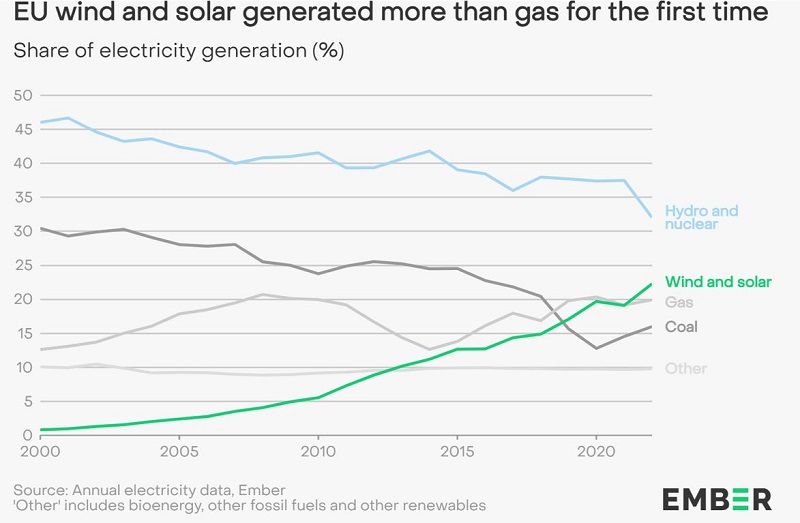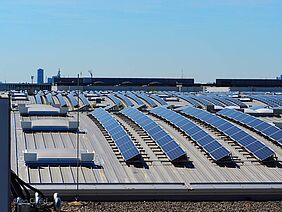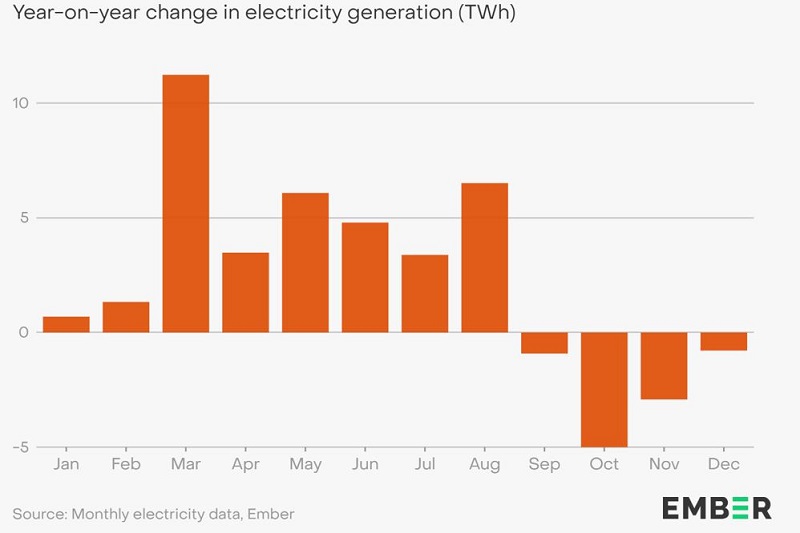Aenert news. Energy Market & Energy Statistics
EMBER's seventh annual European Electricity Review 2023 (CC BY-SA 4.0) analyzes the EU-27's progress in the transition from fossil fuels to clean power, providing data on electricity generation and demand in 2022 and making a forecast for 2023.
In general, EМBER records an acceleration of the electricity transition in 2022, not least because of Russia's invasion of Ukraine.
There is an unprecedented effort to achieve a massive expansion of clean energy, not overlooking the planned phase-out of coal.
Wind and solar energy produced a record fifth of EU electricity (22%), surpassing natural gas for the first time (20%) and remaining above coal power (16%). Wind power produced 15% of electricity in the region in 2022. Eight EU countries produce more than 20% of their electricity from wind, with Germany being the largest producer at 126 TWh, and Denmark leading in terms of wind share in electricity mix (55%). Solar power grew by a record 39 TWh (+24%) thanks to 41 GW of installations in 2022, 47% more than in 2021. With the Netherlands having the highest percentage share of solar generation in its electricity mix (14%), followed by Greece (13%) and Hungary (13%), twenty EU countries achieved the highest ever share of solar electricity. Germany is the largest generator at 59 TWh (10% of total electricity), producing almost twice as much as the second largest generator, Spain (33 TWh, 12%).
As can be seen from the figure below, due to the drought across Europe, hydro generation in 2022 fell sharply, hitting its lowest level since at least 2000. The breakdown of a record number of French nuclear reactors, as well as the almost halving of nuclear power generation in Germany (from 69 TWh in 2021 to 37 TWh in 2022) resulted in a 16% (119 TWh) reduction of nuclear power in the EU.
Сoal-fired power production, accounted for the majority of the increase, adding 28 TWh (+7% compared to 2021). However, due to wind and solar growth, this increase added only 1.5% to 16% of EU electricity generation, remaining below 2018 levels. Moreover, coal generation has been falling since autumn 2022, and dropped by 6% (-9.6 TWh) from September to December compared to the same months in 2021. This was primarily due to the rapid drop in demand for electricity in all EU countries, which is likely to continue to decline over the coming months.
According to EMBER forecasts, hydropower generation will recover in 2023, French nuclear units will return to operation, and wind and solar power development will accelerate. In addition, fossil-fuel power generation is projected to drop by 20%, with gas generation expected to fall even faster than coal generation, thereby showing the European energy sector adapting to life without Russian gas.
By the Editorial Board


